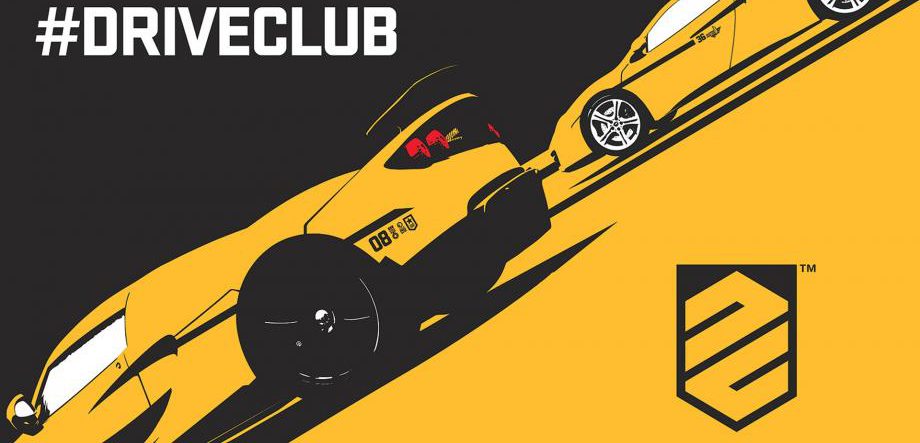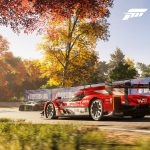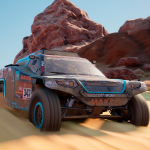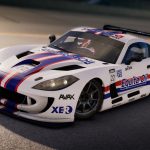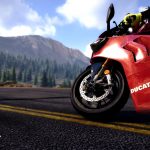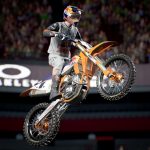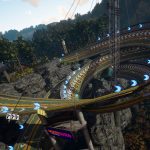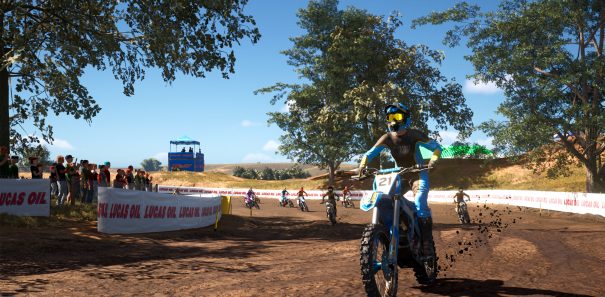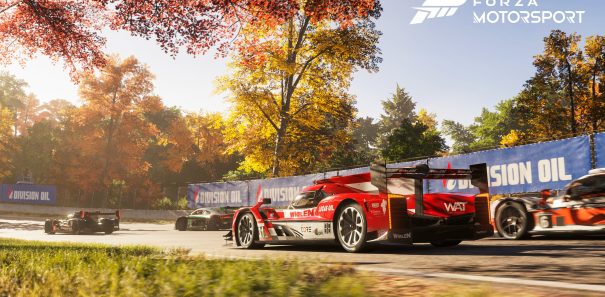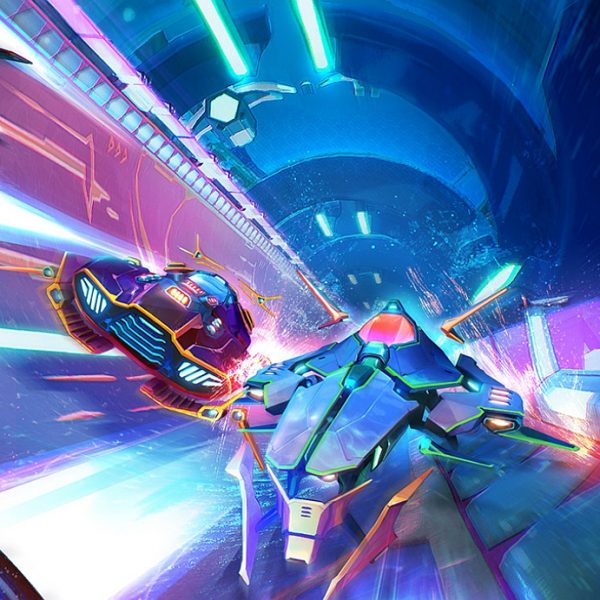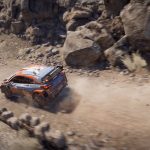In the first part of our DriveClub interview with Evolution Studios, we looked at the sophisticated suite of community features that drive the game across its multitude of game modes. In part two, we delve deep under the bonnet with Evolution to gain a technical insight into the exhaustive development process, from modelling the cars and tuning the handling, to implementing the lighting and designing the audio in new ways that harness the power of PS4.
Seven months. That’s how long it takes to create one car in DriveClub. It’s a painstaking process, and a testament to Evolution’s obsessive attention to detail, rivalling that of the perfectionists at Polyphony Digital – a team of passionate petrolheads who are notoriously pedantic when it comes to modelling cars for Gran Turismo.
“There are a number of factors,” Jamie explains when I ask him to talk me through the extravagant modelling process of DriveClub’s detailed cars from start to finish. “You’ve got the body shell framework when building the car from the CAD data, the audio and the interior of the car. The exteriors are modelled with incredible detail and an incredible amount of polygons. We also apply anti-aliasing to make the cars look as smooth, authentic and realistic as possible.”
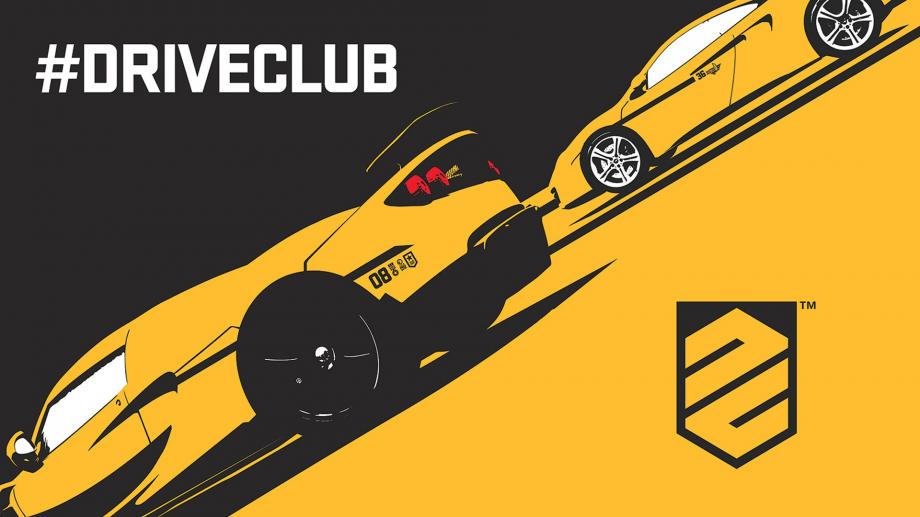
“When building the cars, we actually model each material element. So we start off with a carbon fibre or metal aluminium chassis, then layer the paint or weave in the carbon fibre over the top of that.”
“The cars are modelled with incredible detail, and I mean insane detail. There are no other games that spend the amount of time, effort and number of polys that we do,” Jamie proclaims.
He may have a point: “The caps between the doors and the bodywork are absolutely accurate to the millimetre. We make sure that the screw heads on the floor mats are correct as our Creative Director likes to tell everybody. We make sure that the dashboard is absolutely accurate, and that the way light reflects in the game on the windows as you’re driving is accurate as well. We make sure that the headlights have been waxed and polished to a high standard so you can see the rainbow flare as you’re driving. You can see that the headlights are actually working and casting shadows on the objects around you in the world.”
![]() Evolution’s extraordinary attention to detail even applies to the avatar driver representing you inside the car. “I can’t think of many other games that go to the detail that we go to on the characters inside the car to make it feel realistic, vibrant and more lively than a guy in a white suit and helmet with his hands glued to the wheel. We wanted something with more heart and soul.”
Evolution’s extraordinary attention to detail even applies to the avatar driver representing you inside the car. “I can’t think of many other games that go to the detail that we go to on the characters inside the car to make it feel realistic, vibrant and more lively than a guy in a white suit and helmet with his hands glued to the wheel. We wanted something with more heart and soul.”
Then there’s DriveClub’s lavish lighting system, which has been developed in a new realistic way thanks to the power of PS4. “We want to make sure that the reflections are correct and lifelike” says Jamie. “One of the key things about DriveClub’s lighting is that we’re not going for that super bright fake suntan intense lighting that blinds you when you take a corner. We wanted it to be realistic. For each part of the world, we’ve got realistic lighting – we’ve done a lot of research. We’ve been out to each of the countries in the game and implemented this into the modelling of the cars with how they reflect light.”
“In a lot of games on PlayStation 3 and before that, their lighting systems were like an optical illusion in the sense that the sun or the moon would be in the same place all the time. Therefore, the shadows would never move, so they could be painted onto the floor and not be real shadows.”
“In DriveClub, thanks to the next generation powered by PlayStation 4 we can actually do real shadows. For example, trees in DriveClub are branched and have individual leaves – the light shines through them and casts shadows accordingly.”
“We can do dynamic times of day and the sun can pan. You can accelerate the time of day, so you can go into a race at midday and keep it at midday if you want with a nice high sun and short shadows, but you won’t really get a sense of that movement. You’ll get a sense of the clouds and the atmosphere and how authentic it looks, but if you want to ramp that up you can accelerate the clock by two, four, 24 and up to 64x.”
“While you’re racing two – four laps you can go from sunset to dawn, or even from dawn to sunset and see how much that sun moves, how much the shadows move and feel like you’re a part of this world and you’re connected with this world.”
So that’s DriveClub’s aesthetics taken care of. But it doesn’t end there for Evolution. For them, making the car audio accurate is just as imperative – an aspect that is often overlooked by racing game developers. “Our audio team goes out to visit all of the manufacturers. They get the car on a dyno, hook it up to 18 different microphones inside and outside of the car and then record the audio doing gear sweeps, braking and everything you can do on a dyno.”
“This data is brought back to our studio and then built into the game by layering it properly. So when you’re racing in what we call first person racing, which is in the cockpit as the driver where you can see your hands on the wheel, the dashboard and the reflections in the windscreen, it not only looks amazing, but actually sounds like you’re in the car – the loud roar of the engine is actually accurate to where you would be if you were driving that car.”
“If you’re a bit old-school like me and you want the camera on the bumper so you can just see the road, it changes the audio too. If the camera’s down in front, it sounds like you’re in front of the engine. If you change to the camera behind the car, i.e. the traditional chase cam, which dynamically adjusts if there’s objects or cars blocking your view, it tilts so you can see above them. It’s a clever system, and it changes the audio as well. You sound like you’re out of the car and a bit further away.”
Despite DriveClub’s ultra-realistic graphics and sound design, in terms of car handling Evolution aren’t aiming for a simulation driving experience. Instead, it’s in keeping with their drive to make racing fun for everyone, striking a careful balance between arcade accessibility and full-blown simulation similar to Grid 2, but far less twitchy from what I played.
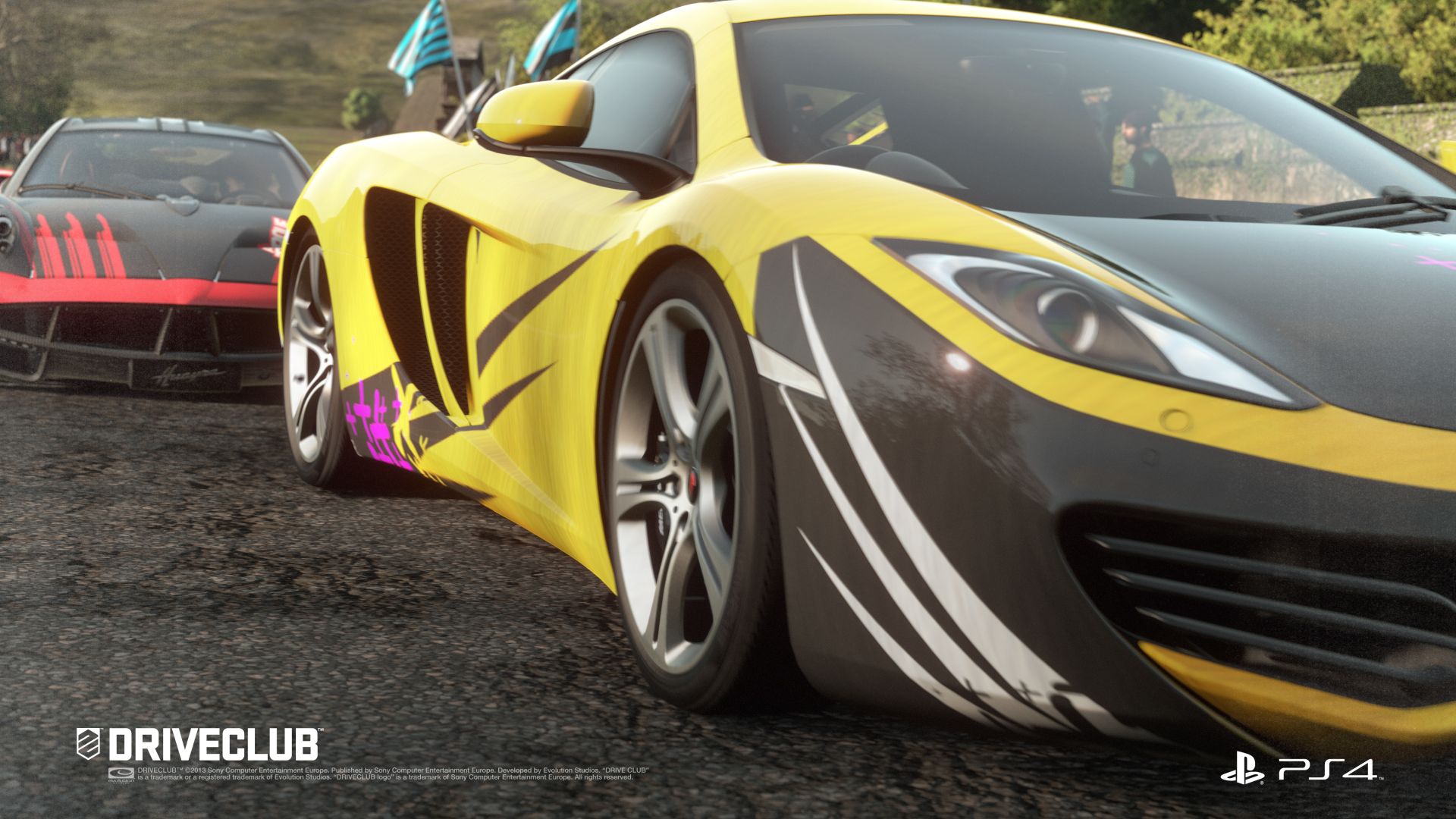 Jamie however believes that the next generation signals a decline in this divide: “This is another one of those things where PlayStation 4 has unlocked a new way of thinking for us. On PlayStation 3 and every other console that’s been out so far, people talk about racing games and they ask ‘is it arcade or simulation?’ It’s like these two buckets that racing games have to fall into. They don’t.”
Jamie however believes that the next generation signals a decline in this divide: “This is another one of those things where PlayStation 4 has unlocked a new way of thinking for us. On PlayStation 3 and every other console that’s been out so far, people talk about racing games and they ask ‘is it arcade or simulation?’ It’s like these two buckets that racing games have to fall into. They don’t.”
“I categorise an arcade game as something that’s fun, easy to learn, and easy to play. DriveClub ticks that box – it feels good and you can get into it easily. Yes, you have to use the brakes and master that art but you can still have fun with it and it’s quick to pick up.”
“I’d then categorise a simulation as something that is true to life: very deep and very rich with a lot to acclimatise to. Things like the Scandinavian flick technique, trail braking, feathering the throttle etc. The more advanced driving techniques, the art of race craft. DriveClub doesn’t’ go to the nth degree in that respect, but it’s certainly deep enough to give people coming from that background the opportunity to enjoy it and use those advanced skills that they know well, whether it’s from driving cars in real life or from other racing games.”
“The handling model is very deep. It’s based on the computer-aided design data that we get from working with the manufacturers of these cars. All the time I’m learning and getting to grips with the handling model and realising just how deep it is. Our Design Director Paul Rustchynsky for example is currently teaching me how to do a Scandinavian Flick.”
As much as Evolution love to divulge how detailed their cars are, they have been tight-lipped when it comes to detailing exactly which cars we’ll be driving in DriveClub. From the screenshots and videos released so far, DriveClub’s car collection doesn’t seem very diverse. It looks oversaturated with exotic supercars like the Aston Martin Vanquish and the Koenigsegg Agera R, with no hot hatchbacks or muscle cars to be seen. Jamie counteracts this, however: “There’s a range of cars in the game,” he affirms. “The focus we’ve taken is that we want the hottest version of any car that we put in. So we won’t have all versions of a certain car from 1997 – 2013 – we’ll just go for the best version of that car. They start fast and get faster.” Entry level cars have yet to be announced, though Jamie used the Audi R8 V10+ as an example of a mid-tier car.
If you were hoping to tune DriveClub’s cars, then be prepared to be disappointed – the mechanics cannot be modified and there also won’t be any options to adjust assists such as traction control to suit your play style. “DriveClub is very carefully balanced and well designed so that we hope you won’t want to change the driving settings as you should be able to get to grips with it,” Jamie explains. “Equally, we want it to be a completely level playing field in terms of cars and tracks. It may be something we look to develop in the future depending on how people react to the game.
Limited cosmetic customisation will be possible however in order to create an identity for your club, but you will have to use pre-set decals as opposed to creating your own custom liveries. After all, Evolution don’t want DriveClub’s online games to be strewn with cars adorned with crudely-drawn genitalia.
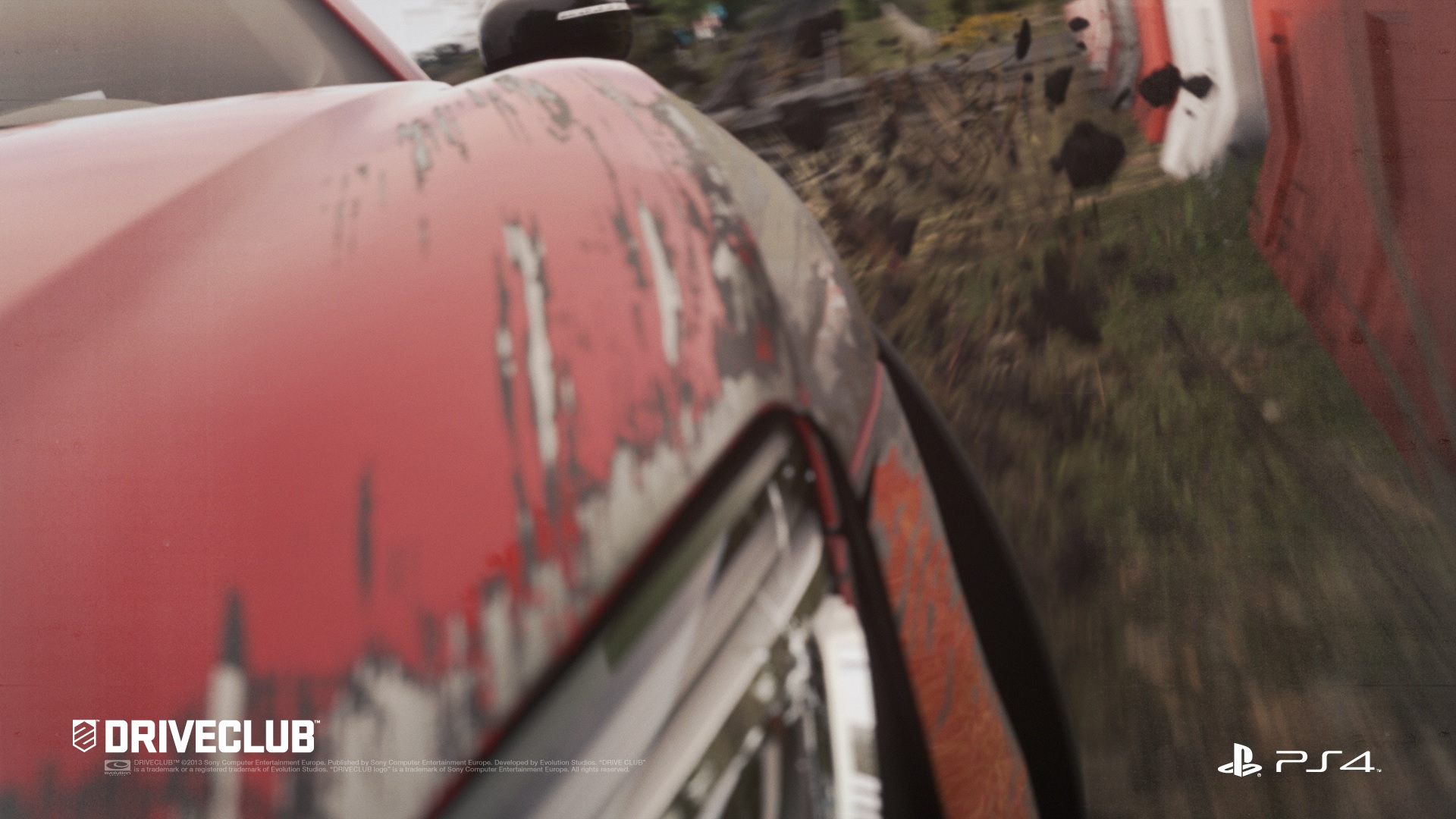
While careless driving in DriveClub will cosmetically damage the car, performance will not be affected after collisions – a decision design deliberately implemented by Evolution. “The key thing with damage in DriveClub is it will never cripple your car and make it perform slower than a car that hasn’t been touched. That’s simply a design decision because we want this game to be fun first and foremost. Equally, if you clip another car or hit a barrier, you’ve already suffered in that event and you’ve already been penalised – you’ve crashed out and need to recover from that, so without then making it even more frustrating and difficult by crippling your car, it seemed a step too far for what we wanted to achieve.”
During my play-through, I purposely went out of my way to damage the car, but was disappointed to find the end result was similar to that of Gran Turismo and Forza Motorsport, with slight dents and paint scuffs despite slamming into a wall at high speed. “It’s definitely more than paintwork damage but it never compromises the performance of the car. You can’t completely smash in the front end of your car, buckle the wheel arch and destroy the tyre, but carbon fibre will crack and break away. Equally, you can scratch off the layers of paintwork and expose the metal. Paintwork will scratch, the bodywork will deform and buckle inwards. It looks satisfying but it won’t compromise your enjoyment of the game.”
Location-wise, DriveClub will contain a variety of tracks set in real world locations – so far India, the Scottish Highlands, Norway, Canada and a road circuit based around an observatory in Chili have been confirmed. Evolution want to utilise these locations to create tracks that encapsulate the thrill of the open road: “The majority of DriveClub is based around open road networks. Within that you’ve got circuits and point-to-point races that go on for miles and miles“, Jamie explains.
“Some of them are quite technical and some of them are ridiculously fast with a lot of straightaways and fast corners. With every single track, we went to these real places, did the research and mapped out the roads. We took the satellite image data, identified key landmarks, identified the type of road and what it looks and feels like. But because in real life those roads are designed for cars travelling at 60 – 70 mph and our cars are doing twice, if not almost three times that, the designers have taken a bit of creative license by widening the tracks a bit or changing the corners are so that they’re not as abrupt and lethal as they would be if you raced these cars at speed on those roads.”
Each location will also feature a more traditional motorsport-esque racetrack with three available variations featuring all manner of chicanes and hairpin corners. While comparing these tracks to motorsport has serious connotations, Jamie stressed that these tracks will be motorsport-esque, but “not in an organised kind of way.” Think of it like a casual track day experience with your friends.
On paper, then, DriveClub looks, feels and sounds phenomenal. But when you sit down to play it, there is one blemish that sticks out like a paint scratch on a factory-fresh Ferrari: the frame rate.
“We have this brand new PlayStation 4 technology. It’s easy to develop on and extremely powerful, so we were always originally targeting 60fps,” says Jamie. But Evolution’s ambition consequently hampered their target: “The challenge has always been that we wanted this dynamic lighting system, we wanted these rich worlds and these incredibly detailed cars and we wanted this level of network connectivity so you can send challenges and receive challenges while you’re racing so you’ve always got something to play for. We’ve constantly been striving to ensure that we’ve got a rock solid 30fps.”
“People assume that you need to lock in frame rate ages ago – that’s how games are made right? The simple answer to that is no, they’re not. When you’re working on a new piece of technology, you’re constantly striving to hit that ceiling and see how far you can optimise it and how far you can push it. We’re still trying to optimise and get to that 60 fps. Whether or not we’ll get there before November? Being realistic, at this stage possibly not.”
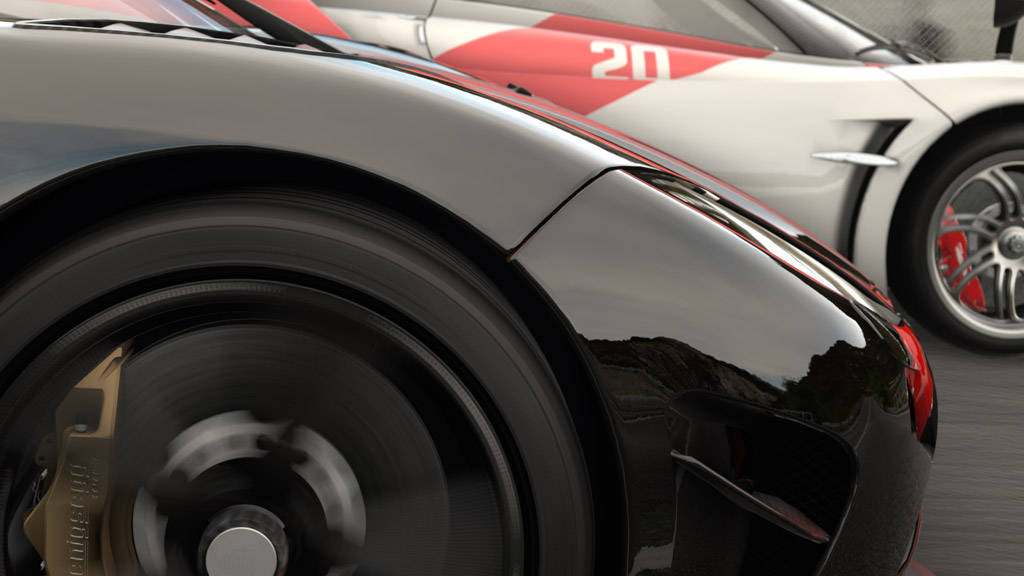
“But we are committed to supporting this game. We want DriveClub to have a long life, we want to build a really solid enthusiastic, lively community around the game. And not just the sort a hairy fairy community that will just play the game, but actual connected groups of friends, connected clubs that form this community. We want that to go on for a long time, keep giving them new things to do, keep optimising and improving the experience as well – frame rate could well be a part of that.”
Since the time of the interview, DriveClub has been unceremoniously delayed until next year – hopefully the extra development time will allow Evolution to crank the frame rate up to that magic 60 fps.
To this day, DriveClub is still evolving – Evolution have stated they’re currently improving the AI, lighting and reflections, to name a few factors. Indeed, it’s come on in leaps and bounds since we last saw it as the latest gameplay glimpses show. We can’t wait to see its immaculate bodywork gleam when it rolls off the assembly line early next year.


